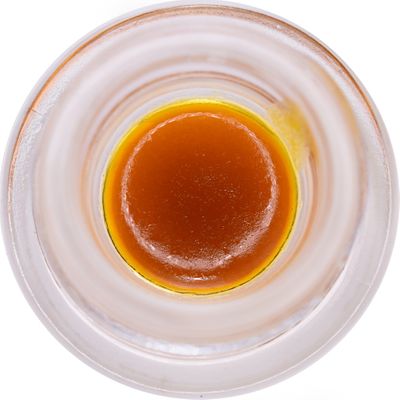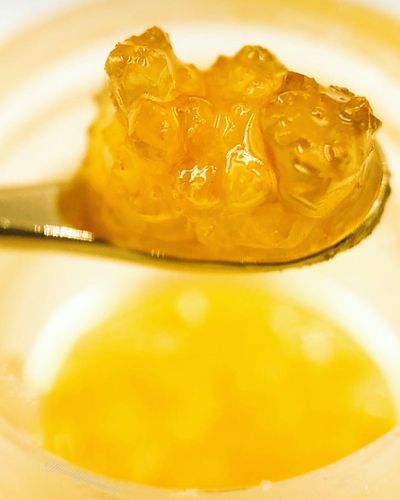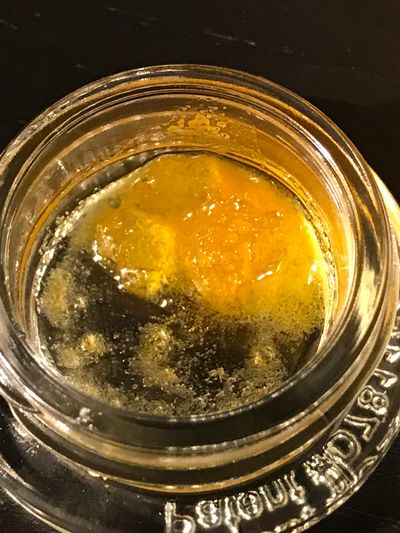Image via
With the advent of dabbing, the cannabis lexicon has grown tremendously.
For starters, there’s the act of dabbing itself. As a reminder, “dabbing” essentially means smoking vapors generated by heating cannabis concentrates. The act of dabbing has introduced consumers to things like torches, rigs (devices used to heat concentrates), and nails (what you place your concentrate on and heat).
In addition to the new array of hardware terminology we have, there is also the matter of understanding all the various kinds of concentrates currently available on the market. There are basically five essential types of concentrates to know about: shatter, crumble, budder, wax, and oil. All of them include the same basic ingredients (beneficial cannabinoids and tasty terpenes), but vary on aspects of texture, purity, and how they’re manufactured.
What leads to shatter being brittle, or crumble being, well, crumbly, is the method of extraction. Essentially how an extract is acquired and subsequently treated is what yields the form and substance you’ll ultimately be enjoying. So, what is live resin and live sauce? And what makes each particular type of cannabis concentrate special?
What Is Live Resin?
Also known as “sap,” live resin is concentrated cannabis trichomes.
As Max Eisler of the brand incredibles explained to MERRY JANE in 2018, “pretty much all [of the] stuff we're trying to get off the cannabis plant is resin.” What makes live resin unique is when in the harvest cycle such resin extraction occurs. In the past, resin was extracted by cultivators once their plants had already been dried. With live resin, that process instead occurs while the plant is still in its freshest state. By extracting resin at this stage, the result is a robust-flavored, impressively potent product that is becoming increasingly popular as a consumption method of choice.
When it comes to extracting live resin, high-grade laboratory equipment and qualified technicians are definitely a must. Essentially the process involves cryogenically freezing freshly-harvested plants (below -292°F). This way, the plant’s original, valuable terpene profile is fully preserved. This is not the case with resin extraction processes that rely on heat (like some forms of rosin extraction), in which a portion of the terpenes are destroyed by nature of the process. That said, don’t discard them based on that info alone!
And for little more of a technical explanation about what makes live resin interesting, peep the following from our recent interview with Harmony Extracts:
The reason it’s called “live resin” is because the terpene profile of the plant, on the day you harvest it, is completely different than when you cut down a plant and hang-dry it. A lot of people don’t realize this, but about 70 to 80 percent of the terpenes that a cannabis plant produces during its life cycle is lost within the first week of hang-drying and curing it. So, when we take the plant and immediately freeze it, we’re freezing in the terpene profile as it was on the day of the harvest. That terpene profile [of a live resin extract] is exactly how it was on the day that you harvested it; it’s a “live profile,” if you will.
OK, But What Is Live Sauce?
Live resin refers to a full-spectrum extract, meaning that the focus extends beyond THC and includes the entire range of cannabinoids and terpenes possible. Live sauce, however, is a live resin derivative that points the spotlight on two specific elements: HTE and HCE.
The “sauce” label comes from the product’s consistency, which includes a liquid portion and a solid portion. The liquid portion is known as high terpene extract (HTE), and it’s focus is not necessarily on potency but rather the resin's scrumptious tastes and smells. (Though many cannabis enthusiasts will argue that terpenes can affect what kind of potency a product produces.) The solid part is composed of THCa crystals, an inactive precursor form of THC that will become heat-activated during the dabbing process.
On the other hand, HCE refers to a high cannabinoid extract, which is the standard applied to extracts that are rich with crystals and contain less HTE, or terpenes.
How Is Live Sauce Made?
Live sauce has a growing reputation for tasting amazing, promising pure, quality hits, and for being among the priciest options on most dispensary menus.
The reason live resin, and live sauce especially, cost an arm and leg is the effort required to manufacture ‘em. In order to flash-freeze fresh cannabis flower and initiate the hydrocarbon extraction process under ideal conditions, a lot of equipment and incredibly skilled labor is involved.
Some extractors engage in a process known as a “diamond mining” in which THCa crystals (a.k.a. diamonds) are separated from the rest of the resin to create a terp sauce. “Loud” or pungent flower is often preferred to welcome even more flavor and aroma to the party. So, if you have the extra pesos and want to try some seriously premium extracts, treat yourself to some live sauce the next time you’re at a pot shop. Your taste buds will thank you!
Follow Zack Ruskin on Twitter


